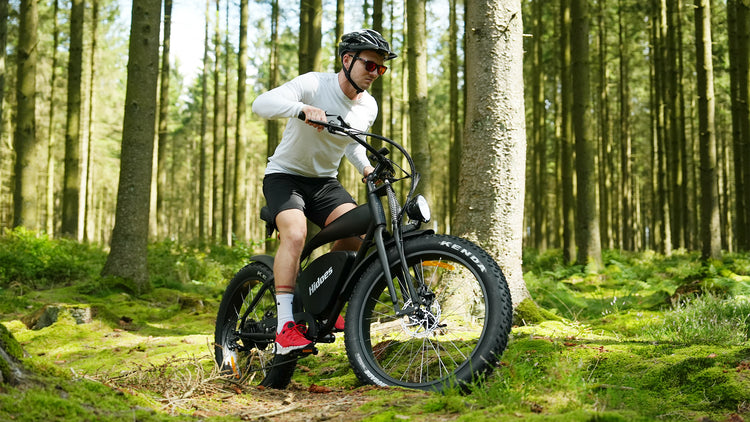
When winter descends and the world outside becomes a winter wonderland, many cycling enthusiasts wonder whether their trusty electric bikes can handle the snowy conditions. Riding an e-bike in the snow might not be as straight forward as in more favorable weather, but with the right precautions and adaptations, it can be an exhilarating and practical way to experience the winter wonderland. In this blog post, we'll explore whether electric bikes are good in the snow and share some tips for those who dare to pedal through the frosty season.
The Pros and Cons of Riding E-Bikes in Snow
Pros:
-
Extended Riding Season:E-bikes can extend your cycling season into the winter months, allowing you to keep commuting or enjoying recreational rides.
-
Reduced Effort:The electric assistance helps combat the added resistance from snowy terrain, making your ride less physically demanding.
-
Eco-Friendly Commuting:Using an e-bike during the winter can be an eco-friendly way to continue your daily commute and reduce your carbon footprint.
Cons:
-
Traction Challenges:Snow and ice can create slippery conditions, making it crucial to maintain good traction on the road.
-
Battery Life:Extremely cold temperatures can affect the battery life of an e-bike, potentially reducing its range.
-
Maintenance:Riding in snow can expose your e-bike to salt and other de-icing agents, which may require more frequent cleaning and maintenance.
Tips for Riding Your E-Bike in Snow
-
Tire Choice:Invest in tires designed for winter riding, such as studded or knobby tires. These provide better traction on icy and snowy surfaces.
-
Lower Tire Pressure:Slightly lower tire pressure can increase the surface area in contact with the road, improving grip. However, avoid reducing it too much, as it can result in pinch flats.
-
Bike Maintenance:Keep your e-bike well-maintained and lubricated, paying special attention to the drivetrain, brakes, and electronics. Regular cleaning is essential to prevent salt buildup.
-
Layer Up:Dress warmly in layers and make sure to protect your extremities from the cold. Wearing appropriate clothing is crucial for a comfortable and safe ride.
-
Safety First:Ensure your e-bike is equipped with lights and reflective gear to enhance visibility, especially during the shorter winter days.
-
Cautious Riding:Take it slow and exercise extra caution. Slow down when approaching icy patches, and avoid abrupt braking or acceleration.
-
Charge Indoors:If possible, store your e-bike indoors and charge the battery at room temperature to maximize its life in the winter.
Conclusion
Hidoes Electric bikes can be suitable for winter riding, but they require careful consideration and some adaptations to handle the challenges posed by snowy conditions. With the right equipment, maintenance, and riding techniques, e-bikes can extend your cycling season and provide an enjoyable and eco-friendly way to explore the winter landscape. If you're a brave winter cyclist, remember that safety always comes first. So, gear up, stay warm, and ride responsibly to make the most of your e-bike in the snow.






